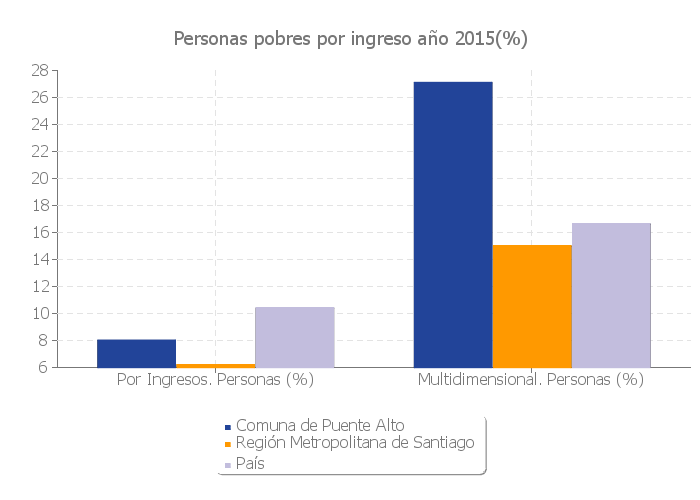PUENTE ALTO – Coronavirus infections in Santiago’s biggest district, Puento Alto, have tripled in one week. The mayor called upon the government to implement a quarantine in the densely populated district, which national authorities have refused to do. Considering relatively high poverty and deficient healthcare in Puente Alto, a humanitarian disaster is lurking around the corner.
In the first weeks of the coronavirus outbreak in Chile, the statistically wealthiest districts of Santiago suffered most cases as their residents could afford to travel abroad. Swiftly, Lo Barnechea, Vitacura, Las Condes and Providencia were put under quarantine to stop the virus from spreading. Now, more than a month into the health crisis, the virus is reaching the lower income districts of the capital.
With over 645,000 inhabitants, Puente Alto registered this Tuesday 322 confirmed cases. The Friday before, authorities already warned that the district is on the brink of disaster after cases rose from 76 to 239 within two weeks.
Puente Alto is not the only lower income district in the Metropolitan region that is being hit by the coronavirus. Cases in Maipú, San Bernardo and Quilicura also doubled over the last two weeks, while the situation in Las Condes, Vitacura and Lo Barnechea, under quarantine for 14 days, has seemingly improved.

On Friday, Puente Alto’s mayor, Germán Codina, lashed out the Ministry of Health after the national authorities implemented only a partial quarantine for his district in response to the tripling of cases. He called the partial quarantine “unintelligible” and feared the measures could come too late for many residents.
A Bomb Waiting to Explode?
The situation in Puente Alto cannot be compared with districts that already have seen their curve flattened. Puente Alto is the most densely populated district in the country and has an especially high – and rising – number of elderly that are 64 or older.
But the district has only three health establishments.
According to the latest census, from 2017, 27.11% of Puente Alto residents suffer under multidimensional poverty, which is nearly twice the national average. That means, they don’t have money for basic needs such as education and healthcare.

A large part of the working population works casually without contract or is active in the informal economy, for example as street vendors. A quarantine would prevent them from working – and deprive them of income.
High poverty rates in a densely populated area, dire health conditions, few treatment facilities and a large group that earns income from working in the open make the area extra vulnerable to the coronavirus. The tripling of cases in two weeks looks like that’s just the beginning for Puente Alto.

Editor-In-Chief Boris van der Spek is the founder of Chile Today.

